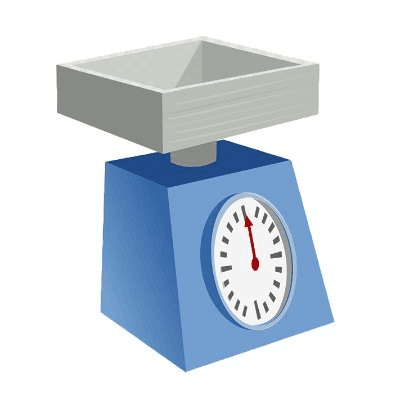How Stephen Hockman Built and Sold a Chainsaw Niche Site for $128,000 in Just 1 Year


Business Description
Table of Contents
Navigate through the case study sections
Executive Summary
Case Study Content
How Stephen Hockman Built and Sold a Chainsaw Niche Site for $128,000 in Just One Year
Building a profitable website from scratch isn’t for the faint of heart. It demands patience, original thinking, and a deep focus on what delivers traffic and revenue. Yet Stephen Hockman did just that, turning a one-year-old affiliate website in the chainsaw niche into a $128,000 payday. Here’s a real look at how he accomplished this, breaking down strategy, tactics, and hard lessons along the way.
About Stephen Hockman: From Passion to Profit
Stephen Hockman is the founder of SEO Chatter, a resource for practical SEO and affiliate marketing advice. He made his first attempts at building online businesses in 2003, inspired by the booming growth of peer-to-peer marketplaces like eBay. After humble beginnings, he became fascinated with affiliate websites after seeing first-hand how content plus traffic equals real money, thanks to the Amazon Associates Program. By 2019, Stephen had moved into full-time niche site building and affiliate income after besting his regular-job income for multiple years.
Building from Scratch: Why Not Buy?
Stephen always built his sites from the ground up. He believes that starting fresh is the best way to create a valuable brand, control future growth, and maximize profits upon exit. He points out that buying sites at 30-40x monthly multiples often leaves little room to boost ROI beyond what the previous owner achieved. Building from zero is work, but you own the entire upside.
Content That Stands Out: Quality or Bust
For Stephen, most content is best written in-house. He emphasizes accuracy, depth, and formatting that meets searcher intent. While he did try freelancers and agencies, quality typically plummeted after the first few samples. When outsourcing short informational posts, he kept it to first drafts only, knowing these needed minimal details. “What is” topics were easy to farm out, but “How to” guides demanded his own touch.
Stephen also experimented with AI tools like ChatGPT but felt the output lacked depth and specificity. To really compete, he’d add original ideas, bullet lists, detailed headings, and personal experience. Every piece of content was carefully outlined to answer every question a reader might have, saving time later by not needing endless updates after Google changed the rules. Staying ahead of algorithm updates means meeting user needs now, not just SEO rules.
The Site: Chainsaws and SEO Tactics
Stephen spotted the chainsaw niche was odd but full of opportunity, especially with competitors failing to deliver detailed buying guides and quality comparison content. He structured his site to focus on high-value keywords like “best electric chainsaw, ” then supported these affiliate guides with clusters of related informational articles (such as “how to start an electric chainsaw”). Internal links weaved all this content together, boosting priority pages for SEO.
He monetized through Amazon Associates and display ads (Mediavine), reaching about $4,000/month in earnings with just 4,000-5,000 monthly pageviews. A strong balance of affiliate and ad revenue allowed every page to contribute. No social media presence was built for this site; Stephen stuck mainly to web-based strategies and backlink tactics.
Backlink Building and On-Site Optimization
With little competition in terms of Domain Authority, a handful of quality backlinks went a long way. Stephen built local citations, inserted niche edits on other outdoor-related websites, and created branded web 2.0 properties. He didn’t waste time with unnecessary tactics. For more competitive projects later, he used outreach to brands for links ("You made our top 10 list!").
Scaling Fast: Wealth in the Gaps
Stephen’s biggest advantage was speed and focus. Because the niche was “underloved” by the existing site owners, he knew that beating thin, low-quality content with something better would pay fast. He went hard, published consistently, and aimed to complete topic clusters thoroughly before moving on. Rather than building for the long-term, his plan was always to sell in a year and maximize his return.
The Exit: Using Empire Flippers for the Sale
After a year, the site was sold for $128,000 via Empire Flippers, a 32x multiple on monthly earnings. The platform made dealing with buyers far easier and safer compared to private deals. The experience wasn’t without headaches: high-value sites draw intense due diligence which means more paperwork, lots of questions, and sometimes lower final prices if the site has dips in traffic, making proper records critical. He tracked profits and losses in spreadsheets, learning the hard way for his first deal.
Lessons and Last Words
Patience is everything when selling a high-value site. Buyers take time to vet deals, and Stephen’s advice is to always set a minimum offer you’ll accept, not just to chase the top dollar. Sometimes, letting a site go for a little less makes more sense than endless bargaining. After the deal closed, Stephen often fielded follow-up questions from buyers for weeks or months, support is part of the job.
Since then, Stephen has sold several smaller sites and one larger home-niche affiliate site for high-six-figures, using the same core approach: quality over quantity, aggressive internal linking, and working in tight topical clusters.
Now: Teaching Others the Same Playbook
Stephen’s main project now is SEO Chatter, providing guidance to new niche site builders and affiliate marketers. He continues to experiment, such as with his personal faith project Biblevise, but the formula stays the same, find an underserved topic, produce what others are missing, and focus on measurable business outcomes. If you want to understand site building, SEO, and affiliate content at a practical level, his story is a blueprint worth following.
Business Plan
Market Problem
Many niche websites struggle to gain traction due to low-quality content and poor SEO practices. This leads to inadequate traffic and…
See the full market problemSolution
Stephen Hockman built a chainsaw niche website focused on high-quality content and smart SEO tactics, effectively addressing the market…
See the full solutionTarget Market
DIY Enthusiasts
Individuals looking for reliable chainsaw information and recommendations for their home projects.
Professional Landscapers
Professionals in need of dependable tools and equipment reviews to make informed purchasing decisions.
Competitors
Chainsaw Journal
Focuses on reviews and comparisons but lacks in-depth guides and SEO optimization.
Best Chainsaw Reviews
Provides product reviews but does not cover broader informational content or user intent effectively.
Competitive Advantage
Stephen's primary edge lies in his commitment to producing high-quality, original content tailored to user needs. He prioritizes accuracy…
See the full competitive advantageSales and Marketing
Stephen relied heavily on organic traffic through SEO rather than social media marketing. His strategy revolved around keyword optimization…
See the full Sales and marketing planSuccess Milestones
Niche Identification
Research and select the chainsaw niche based on competition and potential profitability.
Website Launch
Develop and publish the initial site with foundational content focused on high-value keywords.
Key Takeaways
- 1Building from scratch allows for maximum brand control and higher ROI compared to buying existing sites.
- 2Focusing on high-quality, user-focused content and detailed guides led to outsized traffic and earnings in a low-competition niche.
- 3Combining affiliate programs with display ads can maximize site revenue, ensuring every page contributes to bottom-line.
- 4Strategic internal linking with content clusters (buying guides and supporting articles) boosts SEO and topical authority.
- 5Selling through platforms like Empire Flippers provides protection and access to serious buyers, but requires detailed record-keeping and patience.
- 6Outsourcing content works for basic posts, but key articles perform best when written by the founder or an expert to ensure accuracy and originality.
Key Facts
Tools & Technologies Used
Premium Content Locked
Subscribe to access the tools and technologies used in this case study.
Unlock NowHow to Replicate This Success
Premium Content Locked
Subscribe to access the step-by-step replication guide for this case study.
Unlock NowInterested in Being Featured?
Share your success story with our community of entrepreneurs.
Explore More Case Studies
Discover other inspiring business success stories

How a Simple Weight Data Site Scaled to $55K in 4 Years
WeightOfStuff.com began in early 2020 as a no-frills site listing weights of everyday objects. By publishing over 450 da...
WeightOfStuff.com

How Linktree Scaled Organically to 20 Million Users
Linktree launched in 2016 to fix Instagram’s one-link limit by offering a customizable landing page for multiple URLs. B...
Linktree
How Next Starter AI Leveraged Backlinks and SEO to Hit $10K in 50 Days
Next Starter AI is a boilerplate built on Next.js that slashed development setup time for indie hackers. Launched in Mar...
Next Starter AI
